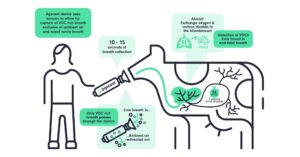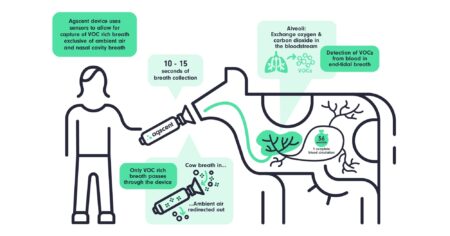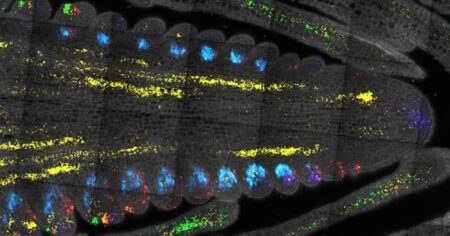By Jason Franken
The June 1 inventory of all hogs and pigs, at 75.1 million head, is up 0.52% from last quarter and 0.33% higher than a year ago, and just above the upper range of pre-report estimates (0.2% lower to 0.3% higher). Likewise, market hog inventories are up 0.57% from last quarter and 0.40% from a year ago, again landing just above the upper range of expectations (0.5% lower to 0.3% higher). Meanwhile the breeding herd is the smallest in a decade, down 0.02% from last quarter and 0.47% from last year, just within the bottom range of pre-report expectations (0.6% lower to 1.0% higher). That’s just 0.90% larger than the breeding herd in June of 2015, and matches that in June of 2016. The March through May pig crop, hit nearly spot on the average pre-report estimate at 1.27% higher than a year ago (0.3% to 2.1% higher).
All except the heaviest category of market hog inventories are up compared to a year ago, with the under 50 pound and 50-119 pound classes up 1.21% and 0.12%, respectively, but fairly inline with pre-report estimates. The 120-179 pound class is up 0.46% compared to expectations of a 1.1% decline, which is a bit of a bearish surprise for the near-term. The over 180 pounds category is down 0.58%, as expected. Overall, the number of hogs weighing less than 180 pounds is about 0.63% larger than a year ago, which will be the market hogs arriving at processing plants from July through November 2025.
The year over year increase in lighter weight hogs partly reflects a similar magnitude increase in the March through May pig crop. The latter results from another record 11.75 pigs per litter for the period, 1.70% higher than a year ago, more than offsetting the mere 0.42% reduction to farrowings. Such productivity growth should be expected to continue, since as shown in a recent farmdoc article, annual growth in pigs per litter since 1994 has averaged over 1.0%, and eight other countries attain greater than 13 pigs per litter. Relative to actual farrowings a year ago, farrowing intentions are down 0.39% for the summer and up 0.72% for the fall, which should imply somewhat similarly small changes in slaughter in subsequent periods.
Frozen stocks of meat are tightening. According to the USDA cold storage report, cold stocks of pork at the end of May are down 1% from the previous month and 7% from a year ago. Beef stocks are down 3% from the prior month and 1% from a year ago, while poultry stocks are up 2% from the prior month but down 6% from a year ago.
The USDA forecasts U.S. per capita pork consumption at 50.3 pounds per person in 2025, rising to 50.8 pounds per person in 2026, reflecting continued concerns for consumer purchasing power in the face of inflation, the relative availability of beef, pork, and poultry, and declining export demand.
The U.S. exported 583 million pounds of pork in April, or about 11% less than in April of 2024, possibly attributable to uncertainty regarding tariffs and terms of trade. Mexico, Japan, and South Korea were top buyers, respectively accounting for 35%, 16%, and 13% of shipments—representing 17%, 14%, and 8% declines from a year ago—while Canada cut imports of U.S. pork by a third. Competitors are gaining in key Asian markets. While the U.S. share of Japan’s imports of pork decreased 4% for the period, Brazil’s share rose 6%. Accordingly, the USDA reduced forecasted 2nd quarter pork exports to 1.69 billion pounds, or 4.2% below last year, with forecasts for the 3rd and 4th quarters of 2025, respectively, 1.6% and 2.5% below a year ago, bringing total pork exports for 2025 to 6.95 billion pounds, or 2.3% lower than in 2024. In 2026, U.S. pork exports are forecast to start fractionally lower in the first quarter but rebound throughout the remainder of the year to almost 1% above 2025.
As discussed in a recent farmdoc article, given that feed costs are a primary component of hog production, a hog-to-corn price ratio around 20-to-1 (for instance, $80/cwt hogs ÷ $4/bu corn = 20) is a historical indicator of hog profitability and cyclical changes in production. Historically, upward and downward moves in the price ratio tend to precede similar changes in farrowings and subsequent hog herds, as producers expand and contract their operations in response to profitability. The hog-to-corn price ratio just rounds up to 20 for the last two quarters (19.90 and 19.67). Last Friday’s closing prices for same month hog and corn futures contracts inform an outlook for a ratio of 27.06 (=113.10/4.18) in July, 20.05 (=85.6/4.27) in December 2025, and 20.41 (=92.25/4.25) in May 2026. If such levels persist, perhaps some breeding herd growth could be in store for subsequent quarterly reports. Feed costs may inch even lower if today’s USDA June acreage report indicates slightly fewer corn acres, as analysts anticipate.
The forecast presented here is for the national weighted average net price on a carcass basis for all transactions for producer-sold barrows and gilts, including negotiated and contract prices. This net price should be more reflective of what producers receive, on average, and normally runs at a premium of more than $2/cwt over the base price on average. From April through June, this net price averaged only $93.98/cwt compared to $96.27/cwt for corresponding net prices for negotiated or spot transactions, which is unsurprising at relatively high price levels, whereas contractual safeguards against lower price levels commonly reverse that relationship.
As hog prices tend to be seasonally higher in the 2nd and 3rd quarters than in the 1st and 4th quarters, this price series is forecast to average $98.23/cwt for the 3rd quarter of 2025, falling to $85.38/cwt by the 4th quarter and $84.09/cwt for the 1st quarter of 2026, before rising to $89.36/cwt for the 2nd quarter of 2026. These projections are consistent with the supply and demand scenario currently anticipated. However, if greater production occurs or if demand softens, lower prices may be realized. Conversely, if pork exports remain more resilient than anticipated, higher prices may be observed.
Discussion and graphs associated with this article here. View slides here.
Largest June Hog Herd Since 2020 & Smallest Breeding Herd Since 2015! was originally published by Farmdoc.







:max_bytes(150000):strip_icc()/2308-01-097_pigs-b0529b97e3e943d392b7014aee9eb4f5.jpg)



:max_bytes(150000):strip_icc()/IMG_1282-2048x1365-9e8be18f4a944008bace0cf11004a69d.jpg)
:max_bytes(150000):strip_icc()/GrainBinExpansion-10_farm_grain_bin_silo-6e1829183acc433984613d940050d12e.jpg)
:max_bytes(150000):strip_icc()/A3EAAC07-0046-410E-910C-032D434652B8_1_201_a-2048x1536-fc42275fb96b4b678ed8958490767723.jpeg)